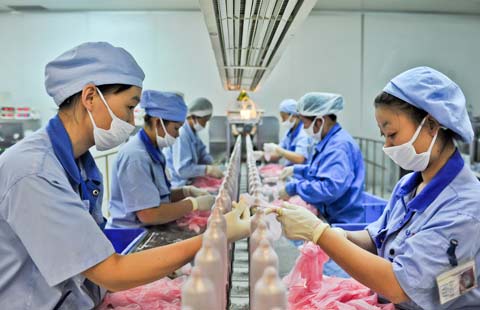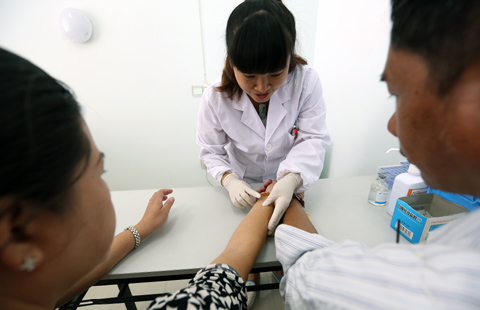Hospital head pleads for patience with medical reforms
By Chen Hong and Wu Qiong in Shenzhen (chinadaily.com.cn) Updated: 2014-07-16 18:34The president of the University of Hong Kong-Shenzhen Hospital called on the public to be more patient with the development of China's medical reform.
"It is still a baby who needs time to become mature," Grace Tang told reporters at a news conference on July 15 to mark the hospital's second anniversary.
The public hospital, funded by the Shenzhen government and managed in a matter consistent with Hong Kong hospitals, is one of the pilot hospitals for introducing medical reforms in China.
"Our mission is to pave the way for China's medical reform so that public hospitals in the country can look after the public interest rather than profits," Tang said.
Since it opened on July 1, 2012, the hospital has introduced several new practices from Hong Kong, including appointment and triage systems. While the hospital has claimed some successes, it is still operating at far less than full capacity.
One notable change is registration. Instead of signing up at the hospital, all patients are required to book appointments in advance, either online or by phone. The hospital later adapted its system to meet residents' needs by allowing walk-in appointments, but services this way are not guaranteed.
First-visit patients to the hospital must first see a general practitioner who then refers the patient to a specialist only when necessary.
Also, patients are not allowed to request a specific doctor, as management's philosophy is to have departments work as a team.
"It's a quite different medical culture, but it proves to be a good way to ensure the doctors' treatment quality and to be more efficient," Tang said.
The public hospital also was the first in the country to set up a patient-relations department to deal with complaints and buy medical liability insurance for all doctors.
The hospital said that the number of outpatients and emergency patients have spiked over the past two years. Meanwhile, medical costs have remained low, Tang said.
Both the outpatient costs per visit and daily hospitalization costs are lower than the average level of the 11 city-level public hospitals in the first quarter of this year. Outpatient costs per visit stood at 285.88 yuan ($46), while daily hospitalization costs were 1,492.31 yuan, the city's health administration said.
However, the hospital, which will get full subsidies from the government for five years until 2017, was questioned about its slow development.
In 2013, the local government subsidized the city-level hospitals with a total of 1.187 billion yuan, of which 1.05 billion went to the Hong Kong-managed hospital.
The government plans to invest another 900 million yuan in the hospital in 2014.
As a result, the number of outpatients reached about 2,500 daily at the moment and is projected to surge to 3,600 by the end of this year, but it is still far from its full capacity of 8,000 to 10,000.
"We hope the public can be rational on the issue as our major role is to work for the medical reform," Tang said.
She suggested that the official opening of an international medial center in August, which will provide VIP services to specific groups like foreigners and affluent Chinese, would make a big contribution to the hospital's bottom line.
- Sun Zhigang: seek new breakthroughs in medical reform
- Premier urges deepening medical reform
- Problems, Roots and Future Ways of China's Medical Reform
- Progress of medical reform in China and further working direction
- Medical reform must be 'rational'
- Give doctors freedom through medical reform
- Pingnan to accelerate medical reform
- Just scan it!
- More Chinese set to travel to Brazil
- Universities to guarantee admission equality
- Beijing calls for 3:1 ratio of bus and subway fares
- HK chief takes first step toward universal suffrage
- One-child rule relaxed for military staff
- Former political advisor expelled from Party
- Water, water, every where
- Tokyo's request is a media ploy
- Anti-graft teams investigate 'naked officials'







